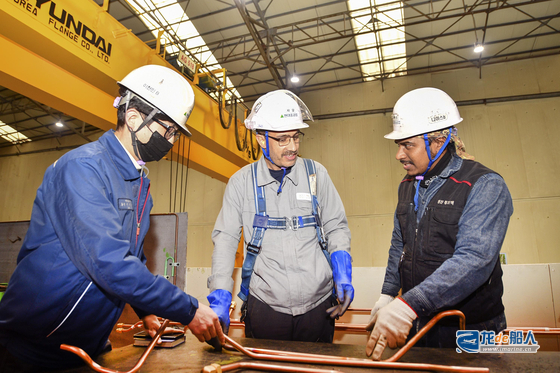As the number of Korean on-site workers employed at shipyards in the Geoje and Ulsan areas of South Korea decreases, foreign workers are quickly filling these vacancies.

South Korean media reported that after the end of the COVID-19 pandemic in 2022, foreign workers began to become the main force of on-site workers in South Korea’s shipbuilding industry. When global ship orders fell sharply in 2016, the South Korean shipbuilding industry faced difficulties such as the loss of large-scale domestic skilled workers.
Since the shipbuilding market conditions gradually improved in 2021, the increase in orders has caused Korean shipyards to face serious labor shortages. However, due to the poor salary conditions and harsh working environment during the economic downturn, and especially concerns about “unemployment again”, Korean workers are not very willing to return to the shipbuilding industry.
In order to alleviate the labor shortage, Korean shipbuilders began to turn their attention to overseas, and the Korean government also made corresponding flexible adjustments to the labor market. For example, the Korean government will expand the quota of E-9 (non-professional employment) foreign workers newly entering the country through the employment permit system from more than 59,000 to more than 69,000 people; and abolish the quota system for E-7 (professional talents) for foreign workers such as welders and painters, which has a large demand for foreign workers. This move aims to fully employ foreign technical labor such as welders and painters according to the needs of shipbuilders.
However, in order to protect the employment of Korean workers, the number of foreign workers employed by each company is limited to no more than 20% of the number of Korean employees.
Despite this, South Korea still has difficulty alleviating the labor shortage problem in the shipbuilding industry. In 2023, the Ministry of Employment and Labor of South Korea introduced a new “Shipbuilding Industry Employment Permit System” with the aim of allocating foreign workers holding E-9 visas to the shipbuilding industry. Previously, the labor quota for South Korea’s shipbuilding industry was allocated from the overall quota for the manufacturing industry, but since the establishment of a special quota for the shipbuilding industry in April 2023, 5,000 foreign workers can be temporarily allocated each year, and this policy will continue until the end of 2025.
This move means that South Korea’s shipbuilding industry will further increase the number of foreign workers. According to data from the Korea Human Resources Development Institute, the number of foreign workers in the shipbuilding industry holding E-9 visas through this policy will increase from 230 in 2021 to 2,667 in 2022, 5,540 in 2023, and slightly decrease to 4,022 in 2024, showing an overall continuous growth trend.
The South Korean industry believes that although the influx of foreign workers has helped alleviate the labor shortage in the shipbuilding industry, its effects have not spread to the regional economy as a whole. Foreign workers who enter the country through the employment permit system must return to their home countries after a maximum of four years and ten months, making it difficult for them to contribute to long-term consumption or improvements in the living environment in the region.


